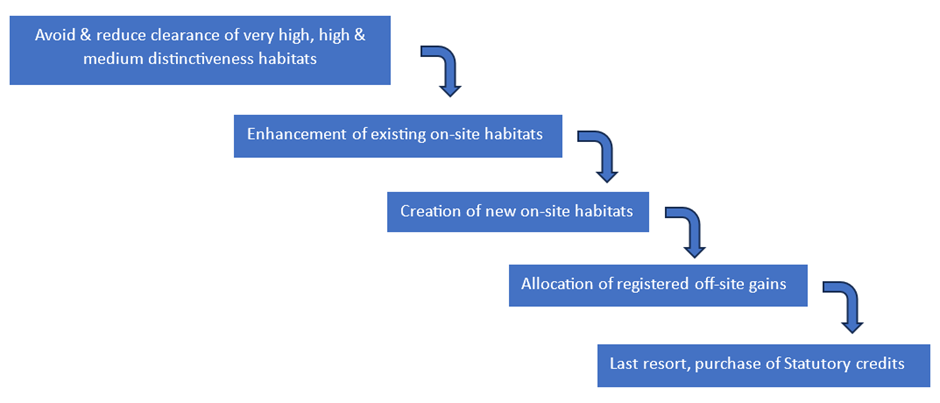Biodiversity Net Gain (BNG) is an approach to development. It makes sure that habitats for wildlife are left in a measurably better state than they were before the development.
In England, BNG is mandatory under Schedule 7A of the Town and Country Planning Act 1990 (as inserted by Schedule 14 of the Environment Act 2021).
Policy NE4 of the North Herts Local Plan also requires development to deliver measurable net gains for biodiversity.
Requirements and exemptions
Developers must deliver a BNG of 10%, unless they are exempt. Exemptions include small projects to improve your property such as extensions, conservatories or loft conversions (known as householder applications).
Most other types of development that require planning permission will require BNG. This means a development will result in more or better quality natural habitat than there was before development.
BNG does not change the existing legal protections for important habitats and wildlife species which must still be considered as part of the planning process.
For more information, email ecology@north-herts.gov.uk.
How to achieve Biodiversity Net Gain
There are three ways a developer can achieve BNG:
- By enhancing or creating biodiversity on-site (within the red line boundary of a development site).
- If developers cannot achieve all of their BNG on-site, they can deliver through a mixture of on-site and off-site. Developers can either make off-site biodiversity gains on their own land outside the development site, or buy off-site biodiversity units on the market.
- If developers cannot achieve on-site or off-site BNG, they must buy statutory biodiversity credits from the government. This should be a last resort. The government will use the revenue to invest in habitat creation in England.
Visit GOV.UK for more information on how a developer can achieve BNG.
The Biodiversity Gain hierarchy
Developers can combine all 3 options but must follow the steps in order. This order of steps is called the biodiversity gain hierarchy:
- Avoid and reduce clearance of very high, high and medium distinctiveness habitats
- Enhancement of existing on-site habitats
- Creation of new on-site habitats
- Allocation of registered off-site gains
- Last resort: purchase of statutory credits

Mitigation hierarchy
The biodiversity gain hierarchy is distinct from the mitigation hierarchy (see below). You should follow both in order when preparing your scheme.
- Avoid habitat damage from the outset
- Minimise habitat damage and loss
- Restore any damaged or lost habitat
- Compensate for the unavoidable loss of biodiversity